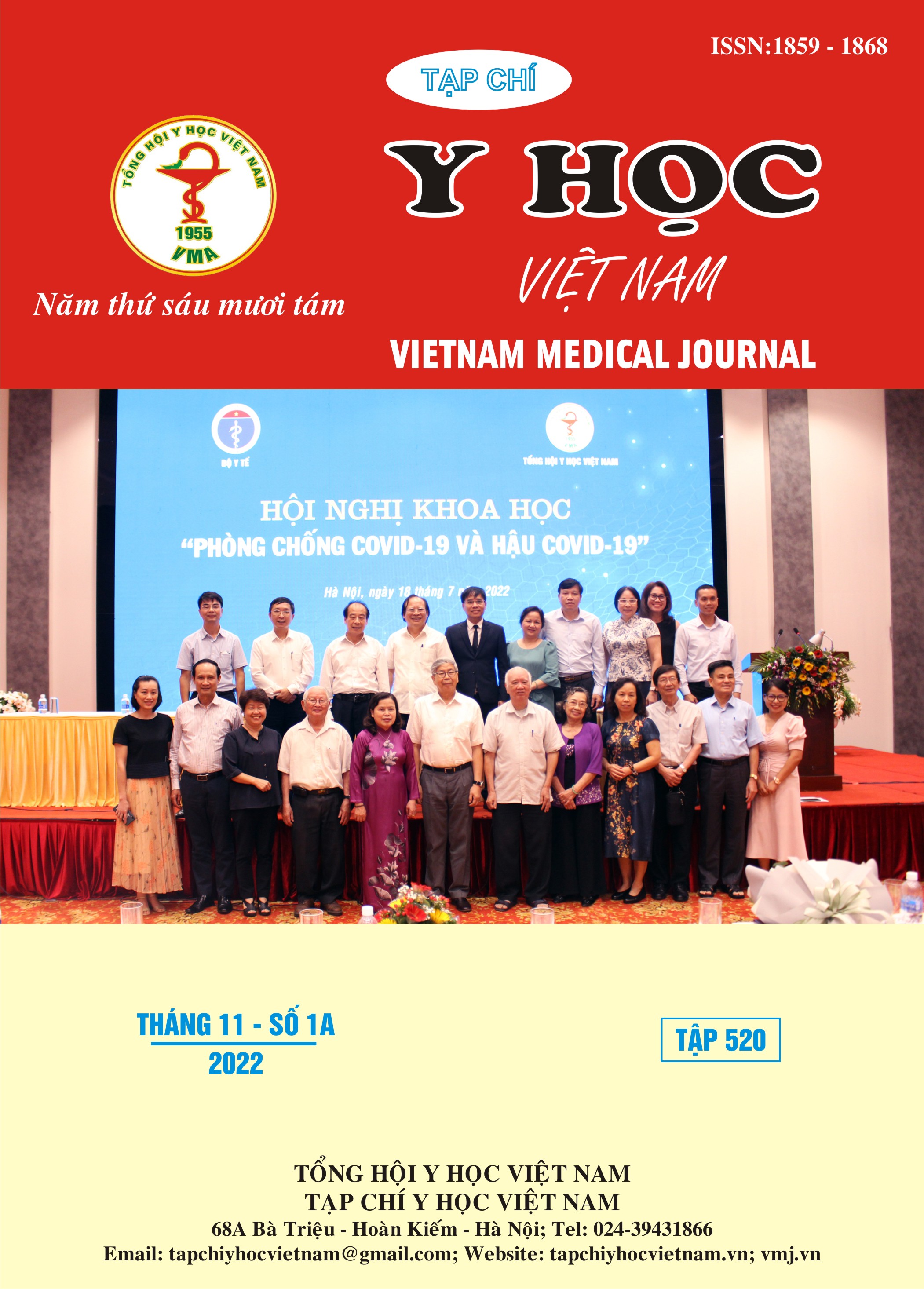RELATIONSHIP BETWEEN IMAGE AND PROGNOSIS OF CEREBRAL BASILAR ARTERY INFARCTION
Main Article Content
Abstract
Objectives: Evaluate the relationship between imaging and prognosis of cerebral basilar arteryinfarction. Subjects and method: A prospective, descriptive study of110 patients with cerebral basilar arteryinfarctiontreated at the Neurological Center, Bach Mai Hospital from July 2021 to July. Results: The average age of the study group was 63.70 ± 14.23. The male/female ratio is 1.6/1. The number of patients with basilar artery lesions on imaging was 36 patients (32.7%), of which there were 4 patients with inferior lesion, 3 patients with the middle lesions, 7 patients with the superiorlesions, the entire basilar artery was 22 patients. In the study, the group with pc score – ASPECTs = 8 points accounted for the highest rate (22.2%). None of the patients had pc-ASPECTS scores in groups 1, 9 and 10. There is a relationship between the characteristics of basilar artery lesions, the pc-ASPECTs score and the degree of disability after 90 days. Patients with basilar artery occlusion were 15.4 times more likely to have severe disability than patients with only basilar stenosis. Patients with pc-ASPECTs < 8 are 10 times more likely to have severe disability than patients with pc-ASPECTs = 8. Conclusion: The more cerebral infarction lesions on magnetic resonance in the perfusion area of the basilar artery system, the greater the degree of disability.
Article Details
Keywords
cerebral basilar arteryinfarction, imaging, prognosis of cerebralbasilar arteryinfarction
References
2. van der Hoeven EJRJ, Schonewille WJ, Vos JA, et al. The Basilar Artery International Cooperation Study (BASICS): study protocol for a randomised controlled trial. Trials. 2013;14:200. doi:10.1186/1745-6215-14-200
3. Bộ môn Thần kinh trường Đại học Y Hà Nội. Dịch tễ học tai biến mạch máu não. Hội Nghị Tai Biến Mạch Máu Não Lần 2 1989 - 1994.
4. Searls DE. Symptoms and Signs of Posterior Circulation Ischemia in the New England Medical Center Posterior Circulation Registry. Arch Neurol. 2012;69(3):346. doi:10.1001/archneurol.2011.2083
5. Nguyễn Duy Trinh. Nghiên cứu đặc điểm hình ảnh và giá trị của cộng hưởng từ 1,5 Tesla trong chẩn đoán và tiên lượng nhồi máu não giai đoạn cấp tính. Luận Văn Tiến Sĩ Trường Đại Học Hà Nội 2015.
6. Archer CR, Horenstein S. Basilar artery occlusion: clinical and radiological correlation. Stroke. 1977;8(3):383-390. doi:10.1161/ 01.str.8.3.383
7. Devuyst G, Bogousslavsky J, Meuli R, Moncayo J, de Freitas G, van Melle G. Stroke or transient ischemic attacks with basilar artery stenosis or occlusion: clinical patterns and outcome. Arch Neurol. 2002;59(4):567-573. doi:10.1001/archneur.59.4.567
8. Puetz V, Sylaja PN, Coutts SB, et al. Extent of hypoattenuation on CT angiography source images predicts functional outcome in patients with basilar artery occlusion. Stroke. 2008;39(9): 2485-2490. doi:10.1161/ STROKEAHA.107.511162


